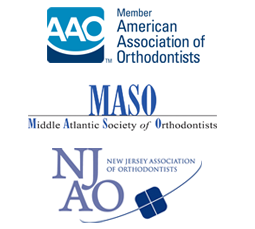Dental Update
Call Giegerich Orthodontics at 609.652.1900 or fill out our online Request an Appointment form to schedule a complimentary consultation with us.
Parts of an Orthodontic Brace
Are you considering braces? Did your orthodontist suggest them to you? If these orthodontic solutions are the key to having straight, beautiful teeth, your orthodontist will prescribe them for you. Here are a couple of things you might want to know about braces.
If youre looking for an effective solution to achieve a straight smile, you can use braces. These orthodontic appliances work by applying constant pressure on your teeth and moving them in to the ideal direction.
Braces typically consist of wires, brackets and bands, working together.
Brackets appear as small squares attached to the front of teeth using a special bonding agent; in some cases, brackets are bonded at the back of teeth, hiding them from view. Brackets are available in tooth-colored ceramic, plastic and stainless steel.
Connecting the brackets are archwires. These wires also guide the teeths movement. Holding the archwires to the brackets are ligatures, which appear as tiny elastic rubber bands. Tiny springs may also be attached between brackets.
To provide an anchor for the brackets, orthodontic bands are wrapped around the teeth. However, these are not used in all patients; some may have brackets without bands.
But before braces treatment begins, spacers will be attached inside your mouth. These orthodontic appliances act as separators that create small spaces between teeth in preparation for placing orthodontic bands.
Every month or so, you will need to see your orthodontist and have your braces adjusted. This is to ensure that your orthodontic appliance is constantly putting effective pressure on your teeth until they move to their desired positions. Wires may be tuned, springs tweaked and rubber bands replaced for this purpose.
Some of these modifications may cause discomfort. You may temporarily feel soreness in the mouth, which can be remedied by over-the-counter pain relievers. But if the pain subsists, speak with your orthodontist immediately.
Archive
- 2013-03-21
- 2013-04-21
- 2013-05-21
- 2013-06-21
- 2013-07-21
- 2013-08-21
- 2013-09-21
- 2013-10-21
- 2013-11-21
- 2013-12-21
- 2014-01-21
- 2014-02-21
- 2014-03-21
- 2014-04-21
- 2014-05-21
- 2014-06-21
- 2014-07-21
- 2014-08-21
- 2014-09-21
- 2014-10-21
- 2014-11-21
- 2014-12-21
- 2015-01-21
- 2015-02-21
- 2015-03-21
- 2015-04-21
- 2015-05-21
- 2015-06-21
- 2015-07-21
- 2015-08-21
- 2015-09-21
- 2015-10-21
- 2015-11-21
- 2015-12-21
- 2016-01-21
- 2016-02-21
- 2016-03-21
- 2016-04-21
- 2016-05-21
- 2016-06-21
- 2016-07-21
- 2016-08-21
- 2016-09-21
- 2016-10-21
- 2016-11-21
- 2016-12-21
- 2017-01-21
- 2017-02-21
- 2017-03-21
- 2017-04-21
- 2017-05-21
- 2017-06-21
- 2017-07-21
- 2017-08-21
- 2017-09-21
- 2017-10-21

















